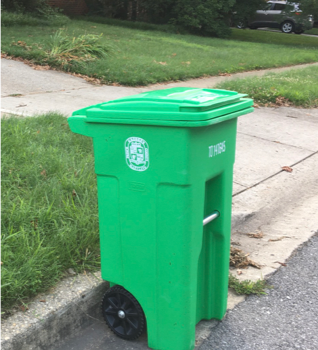CLIMATE ACTION COMMISSION RELEASES CLIMATE ACTION PLAN
By Janet Gingold
 On October 22, the Prince George’s County Climate Action Commission voted to put forward the Prince George’s County Climate Action Plan for a 30-day public comment period beginning November 1. The full plan and information about how to provide comments is available at mypgc.us/climateactionplan. Written comments can be submitted by email or through the comment portal. Dates and times for in-person hearings are expected to be published soon. Public comments will become part of the public record and will be presented along with the plan to the County Council in January 2022.
On October 22, the Prince George’s County Climate Action Commission voted to put forward the Prince George’s County Climate Action Plan for a 30-day public comment period beginning November 1. The full plan and information about how to provide comments is available at mypgc.us/climateactionplan. Written comments can be submitted by email or through the comment portal. Dates and times for in-person hearings are expected to be published soon. Public comments will become part of the public record and will be presented along with the plan to the County Council in January 2022.
In keeping with State and Regional goals, the Commission has set a goal for the County to reduce its greenhouse gas emissions by 50% from 2005 levels by 2030. While the plan focuses primarily on actions for the next 3-5 years, it provides a framework for a continuing long-term work to mitigate climate impacts and improve resilience. With emphasis on health impacts and equity, it includes recommendations for systemic changes that will help county decision-makers access up-to-date data and incorporate best practices to decrease greenhouse gas emissions and increase climate resilience county-wide. Professional development for county staff, workforce development, community outreach, and education are key elements for implementation. Each of the 26 priority recommendations includes a blueprint outlining specific steps the county should take as well as considerations for making outcomes more equitable. Action areas include county operations, mitigation, adaptation, and community engagement.
Five priority recommendations call for transformation in county government operations: to build internal capacity to plan and implement climate action; to lead by example and ensure transparency; to ensure meaningful, equitable community engagement; to commit the county to a just transition to renewable energy; and to align land-use decisions with policies related to smart growth, natural resource conservation, and green infrastructure.
Mitigation recommendations describe how the county can decrease impacts from climate change by reducing greenhouse gas emissions reductions, both in county operations and community-wide. Recommended actions in the energy sector include powering county operations with 100% renewable energy by 2025; increasing opportunities for funding and financing to facilitate 600,000 additional solar installations by 2030; and accelerating deployment of resilient energy systems, including microgrids and battery storage.
Transportation generates 48% of the County’s greenhouse gas emissions. Recommendations for the transportation sector include electrification of vehicles and augmenting the network of charging stations, directing investment to activity centers to decrease vehicle miles traveled, and strengthening telecommute policies.
Commercial and residential buildings produce 45% of the county’s greenhouse gas emissions. Recommendations to decrease emissions from buildings include accelerating implementation of deep energy retrofits and community-wide energy efficiency and weatherization efforts; and establishing a building efficiency monitoring program for all commercial and multi-family buildings greater than 50,000 square feet with benchmarks for energy and water consumption.
Mitigation recommendations also include using nature-based solutions for carbon sequestration. The Climate Action Plan recommends enacting and enforcing No Net Loss tree conservation regulations and policies to expand and maintain tree canopy and forests. To maintain tree cover at 52% through 2030 and expand tree cover to 55% by 2050, the Climate Action Plan recommends strengthening tree conservation codes, improving data collection to monitor and map tree cover and ecosystem services,  targeting tree stewardship grants for areas with the greatest need, and increasing incentives for residents and businesses to add new trees. Conserving tree cover is also a climate-resilience strategy with significant public health benefits. In addition to taking up carbon, trees also decrease the impact of excess heat through shade and evaporative cooling and they decrease flood risks by taking up stormwater and preventing erosion.
targeting tree stewardship grants for areas with the greatest need, and increasing incentives for residents and businesses to add new trees. Conserving tree cover is also a climate-resilience strategy with significant public health benefits. In addition to taking up carbon, trees also decrease the impact of excess heat through shade and evaporative cooling and they decrease flood risks by taking up stormwater and preventing erosion.
Prince George’s County generated over 800,000 tons of municipal solid waste in 2020. Previous waste audits have estimated that 75% of this waste could be diverted, recycled or composted. Food waste in the landfill produces methane, a potent greenhouse gas. The Climate Action Plan recommends expansion of county waste reduction and diversion efforts, including full implementation of a county-wide organics composting program, bans on single use plastics, and extended producer-responsibility legislation. The Plan also recommends consideration of a Pay-As-You-Throw program and a feasibility study about minimizing methane emissions from the landfill and phasing out diesel trucks. The waste reduction recommendation also calls for expanding recycling and waste diversion programs, using data from community surveys and regular waste audits to inform outreach efforts.
Adaptation recommendations focus on preparing the County to protect people, critical infrastructure, and cultural and natural resource from expected climate impacts, especially increased frequency of excess heat and extreme precipitation events. The Climate Action Plan recommends integrating climate resilience criteria into long-range county plans and capital improvement programs; improving stormwater management and flood mitigation programs; preserving and restoring natural resource areas and agricultural lands; evaluating climate risks to dams and levees; requiring community-wide resilient green infrastructure; adopting better practices for climate-ready, green buildings; and public outreach regarding climate risks and opportunities to implement climate actions.
Highlighting the public health impacts of climate change, the Climate Action Plan includes multiple actions for safeguarding health and wellbeing. Adaptation recommendations describe specific steps to reduce exposure of vulnerable populations to extreme heat, to establish resilience hubs for vulnerable communities, and to develop a healthy food system supported by low-carbon regenerative agricultural practices. Mitigation recommendations that decrease combustion of fossil fuels for electricity generation and transportation will also decrease air pollution that aggravates respiratory disease and contributes to cardiovascular disease and cancer. Land-use recommendations that bring work closer to home and infrastructure for more walkable, bike-able communities can provide co-benefits for public health by increasing daily physical activity. Improving green infrastructure and conserving natural resource areas can enable more residents to experience the physical and mental health benefits of physical activity in green spaces.
 With the successful implementation of the Climate Action Plan depending on engagement of all public and private sectors, the Commission has included recommendations for equitable community engagement, education and outreach. The Community Engagement section calls for the County to use surveys, listening sessions, and community science projects to find out what communities need and target interventions where they are most needed. Improved online resources should include information residents need to implement mitigation and adaptation recommendations, from flood maps, to best practices for landscaping and home retrofits, to available county resources. Other recommendations focus on using existing educational resources to improve community-wide climate literacy through education about climate impacts and solutions. For more climate-conscious decision making at all levels, the Climate Action Plan recommends embedding climate literacy into curricula at all levels, from K-12 schools through higher education; preparing students careers in the new green economy; augmenting Prince George’s Community College workforce development program to retrain displaced workers for new opportunities in renewable energy, energy retrofits, new automotive technology, and regenerative agriculture; using local government communications to educate the general public; enhancing library resources and programs about climate solutions; and including climate awareness in M-NCPPC programs.
With the successful implementation of the Climate Action Plan depending on engagement of all public and private sectors, the Commission has included recommendations for equitable community engagement, education and outreach. The Community Engagement section calls for the County to use surveys, listening sessions, and community science projects to find out what communities need and target interventions where they are most needed. Improved online resources should include information residents need to implement mitigation and adaptation recommendations, from flood maps, to best practices for landscaping and home retrofits, to available county resources. Other recommendations focus on using existing educational resources to improve community-wide climate literacy through education about climate impacts and solutions. For more climate-conscious decision making at all levels, the Climate Action Plan recommends embedding climate literacy into curricula at all levels, from K-12 schools through higher education; preparing students careers in the new green economy; augmenting Prince George’s Community College workforce development program to retrain displaced workers for new opportunities in renewable energy, energy retrofits, new automotive technology, and regenerative agriculture; using local government communications to educate the general public; enhancing library resources and programs about climate solutions; and including climate awareness in M-NCPPC programs. 
As they voiced their approval for putting forward the Climate Action Plan, Commissioners expressed their appreciation for the diligence of county staff and consultants, especially Mary Abe, Dawn Hawkins-Nixon, and Brandy Espinola, who worked tirelessly to incorporate input from the Commissioners, the public, and the Resident Advisory Group. They underlined the importance of health considerations, the need to hear the voices of youth whose futures depend on actions taken now, and the critical importance of land-use decisions and community engagement. They also expressed an urgent need for action now to decrease climate impacts for County residents now and into the future.
Full implementation of the plan requires action by the County Council and the County Executive. Residents from all areas of the County are encouraged to provide comments for the public record and to contact their elected officials to share their views about the plan.
The author is Chair of the Prince George’s Sierra Club and a Member of the County’s Climate Action Commission.